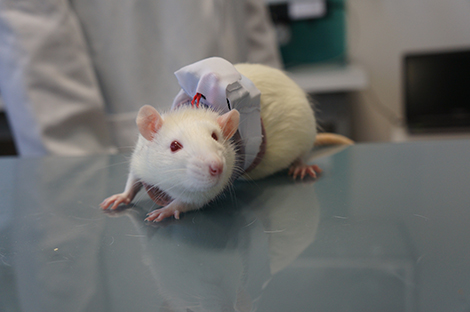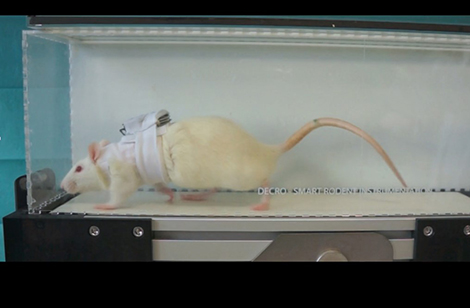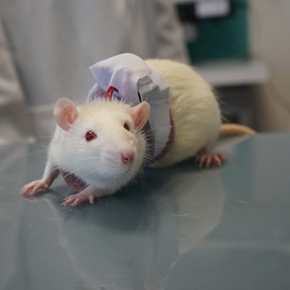
Jacket for cardiorespiratory monitoring of laboratory animals
To meet their objective of offering connected devices for the physiological monitoring of laboratory animals without recourse to anesthesia or surgery, researchers from the TIMC-IMAG laboratory (CNRS / Université Grenoble Alpes / Grenoble INP / VetAgro Sup) have developed a jacket that measures rodent cardiac and respiratory activity. This patented tool soon to be released by Etisense, a TIMC-IMAG spin-off company, paves the way for enhancing the quality of research data and advancing animal welfare.
The well-being of research animals is a topic of growing concern to society and researchers themselves. Yet until now a highly invasive preliminary surgical procedure was necessary for cardiorespiratory physiological monitoring of conscious animals. In addition to furthering animal welfare, successful noninvasive respiratory and cardiac monitoring offers two advantages to researchers: (1) animals wearing the jacket can move more freely about, which expands experimental design possibilities, and (2) bias introduced by the effects of stress, anesthesia, and surgery is eliminated. Using the jacket saves money too, through simplification of experimental procedures no longer requiring surgery or anesthesia.

© Etisense
The jacket applies “virtual flowmeter” technology. It measures variations in thoracic volume at ultrahigh resolution,1 tracking both the flow of air between the rib cage and the outside environment and the flow of blood between the rib cage and the rest of the animal's body. Sensor signal processing is central to this approach. In small animals like rats, heart rates are much higher than in humans and signal amplitudes are too small, which makes their analysis even more difficult. To overcome these obstacles, the TIMC-IMAG team developed mathematical tools and technology for deriving standard physiological measurements previously only obtainable with sensors positioned around the aorta during a surgical operation.2

Aligned with the 3R principles of ethical research,3 this innovation has been validated with rats4 and is now under development by the start-up Etisense,5 a TIMC-IMAG spin-off company. The company's goal is to release their first product for rodents, Decro, in the third quarter of 2019. The researchers plan to later market versions of their jacket for guinea pigs, miniature pigs, dogs, and primates.


- 1This is accomplished using a method known as inductance plethysmography.
- 2P. Baconnier, F. Boucher, P.Y. Guméry. Device and method for non-invasive measurement of subdiaphragmatic aortic flow in a small laboratory mammal. Patent WO 2017037369 A1.
- 3The 3R principles call for replacement of animal testing with other methods where possible, reduction of the number of animals used if not, and as exemplified by the Etisense jacket, refinement of procedures in the interest of animal welfare.
- 4Though the current jacket is connected to measuring instruments by wires, the research team has developed a wireless version now being tested with rodents.
- 5This project received funding from the Linksium technology transfer and start-up incubator firm and the Carnot Institute for Software and Intelligent Systems (LSI).


